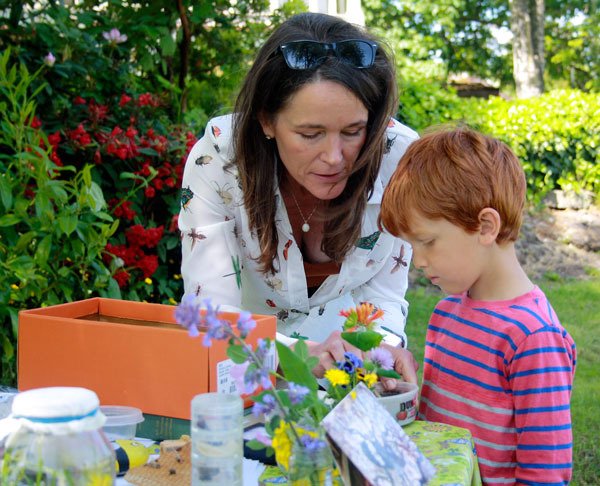Children made bee hotels, played games, and learned all about the varieties of pollinating insects in San Juan County, May 13, from 11:30-1 p.m. in Driggs Park, hosted by the Land Bank and the National Park Service. The event was in celebration of “History Lives Here.”
“You can actually tell the difference between male and female bees by looking at their faces,” entomologist Cynthia Brast said, sharing her collection of insects. “Male honey bees have bigger eyes.”
She also discussed many other insects as well, including woodborers, carpenter ants and moths. Brast had a container filled with sand, in which several doodle bugs were hiding, if the children gently stirred the sand with a stick, they could be lucky enough to find one.
There were several tables set up amongst the old heritage fruit trees of Driggs Park, off Argyle. Each table provided different hands on projects, including making “bee hotels” which consisted of straws placed in evergreen boughs, and hung them in the fruit trees. No word yet whether these hotels still have any vacancies, but no doubt they will all be booked soon. Bees, after all have been pollinating those fruit trees for years, just as they have been pollinating plants all over the islands through out history.



